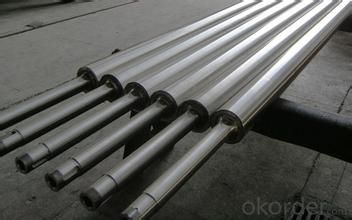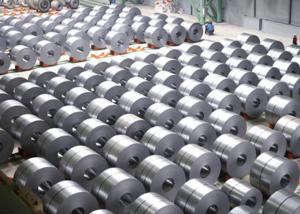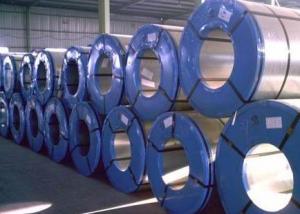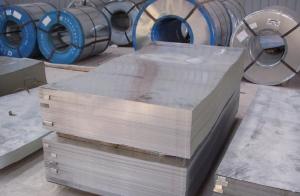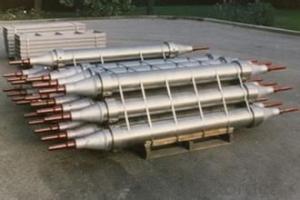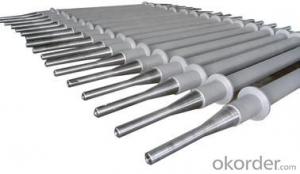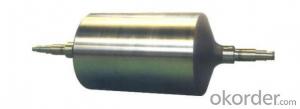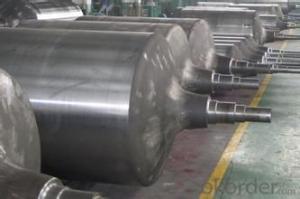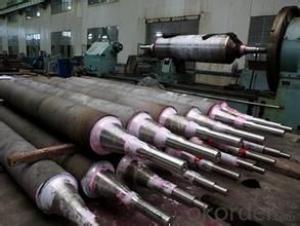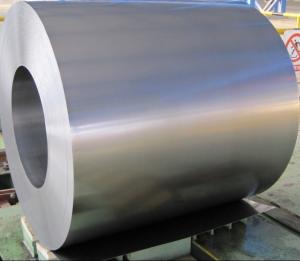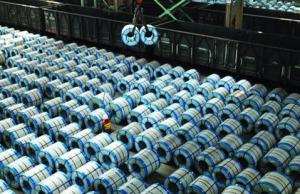Roll Differential Temperature furnace
- Loading Port:
- Tianjin
- Payment Terms:
- TT OR LC
- Min Order Qty:
- 1000 PCS
- Supply Capability:
- 10000 PCS/month
OKorder Service Pledge
OKorder Financial Service
You Might Also Like
Quick Details
| Condition: | New | Type: | Resistance Furnace,Furnace | Usage: | Heat Treatment Furnace |
| Place of Origin: | Brand Name: | Model Number: | RT | ||
| Processing Type: | Machining Equipment |
Packaging & Delivery
| Packaging Detail: | 2000 |
| Delivery Detail: | 90 |
Usage:The heat-treatment of iron parts,such as:normalizing,annealing and quenching.
Structure Instruction:The full-fiber gas trolley furnace is combine with furnace shell,lining,trolley and door,microcomputer control systems,etc.
The furnace shell welded by steel,and the lining formed by full-fiber refractory.
Features:
1.The full-fiber refractory made by light compound materials,lighter and more refractory.
2.The microcomputer control systems formed with temperature control system, combustion control systems, pressure automatic control system, cooling control systems, fault alarm system and power control system.They could easily to achieve the safety automation production.
3.The door use the upper and lower open-type,and full-fiber self-tight sealing system.
4.The fuel could be gas or oil.
- Q: What are the applications of steel angles?
- Steel angles have a wide range of applications in various industries. They are commonly used in construction for structural framing, providing support and stability to buildings. Steel angles are also used in the manufacturing of machinery, equipment, and vehicles, where their strength and durability are crucial. Additionally, they find application in the fabrication of infrastructure such as bridges, walkways, and platforms. The versatility of steel angles makes them valuable in many other applications, including shelving, fencing, and reinforcing concrete structures.
- Q: How is steel different from iron?
- Steel is different from iron in that it is an alloy made by adding small amounts of carbon to iron, which gives it enhanced strength, hardness, and durability compared to pure iron. Steel also offers better resistance to corrosion and can be easily shaped and molded into various forms, making it a versatile material for construction, manufacturing, and other applications.
- Q: What are the different types of steel sheets and their uses in the packaging industry?
- There are several types of steel sheets used in the packaging industry, including tinplate, galvanized steel, and stainless steel. Tinplate is a thin steel sheet coated with a layer of tin, making it highly resistant to corrosion. It is commonly used for making food cans and beverage containers due to its ability to preserve the contents' freshness. Galvanized steel sheets are coated with a layer of zinc, which provides excellent rust resistance. They are often utilized for packaging materials that require durability and strength, such as metal drums and pails. Stainless steel sheets, known for their corrosion resistance and hygienic properties, are used in the packaging industry for applications like pharmaceutical packaging, cosmetic containers, and high-end food packaging.
- Q: How is stainless steel different from other types of steel products?
- Stainless steel is different from other types of steel products primarily due to its unique composition, which includes a high percentage of chromium. This addition of chromium enhances its corrosion resistance properties, making it highly resistant to rust and stains. Unlike regular steel, stainless steel does not require any additional protective coatings or treatments to prevent rusting. Additionally, stainless steel offers excellent strength, durability, and heat resistance, making it suitable for a wide range of applications in various industries, including construction, automotive, and kitchenware.
- Q: How is steel used in the production of HVAC systems and equipment?
- Steel is used in the production of HVAC systems and equipment due to its strength, durability, and heat resistance properties. It is used in the construction of air ducts, pipes, and various components of the system, ensuring structural integrity and long-lasting performance. Steel is also commonly used for heat exchangers, condenser coils, and fan blades, as it can withstand high temperatures and provide efficient heat transfer.
- Q: What are the applications of steel forgings?
- Steel forgings have a wide range of applications across various industries, including automotive, aerospace, construction, and oil and gas. They are commonly used in the manufacturing of critical components such as engine parts, gears, shafts, and valves, where high strength, durability, and resistance to fatigue and wear are required. Steel forgings are also used in structural applications, such as in the construction of buildings, bridges, and offshore platforms, due to their ability to withstand heavy loads and harsh environments.
- Q: How is steel billet produced?
- Steel billet is produced through a process called continuous casting, where molten steel is poured into a water-cooled mold to form a solid rectangular shape. The billet is then further processed through heating, rolling, and shaping techniques to achieve the desired dimensions and properties.
- Q: How is steel pipe welded for structural applications?
- Steel pipe is welded for structural applications using various methods such as arc welding, gas welding, or resistance welding. The process involves heating the edges of the steel pipe and applying pressure to fuse them together. The welds are then inspected for quality and strength to ensure they meet the required standards for structural applications.
- Q: What are the different types of steel chains and their uses in the automotive manufacturing process?
- There are several types of steel chains used in the automotive manufacturing process. Some common types include roller chains, timing chains, and conveyor chains. Roller chains are commonly used in engines and power transmission systems to transfer power from the engine to various components. Timing chains are used to synchronize the movement of engine valves and pistons, ensuring proper engine performance. Conveyor chains are utilized in assembly lines and production processes to move and transport automotive parts. These steel chains play a crucial role in the automotive manufacturing process by ensuring smooth operation, power transmission, and efficient production.
- Q: What are the different types of steel bollards and barriers available?
- There are several types of steel bollards and barriers available, including fixed bollards, removable bollards, collapsible bollards, and automatic retractable bollards. Fixed bollards are permanently installed and provide a strong physical barrier. Removable bollards can be easily taken out when needed and offer flexibility in traffic control. Collapsible bollards can be folded down to allow temporary vehicle access. Automatic retractable bollards can be controlled electronically and are often used in high-security areas.
Send your message to us
Roll Differential Temperature furnace
- Loading Port:
- Tianjin
- Payment Terms:
- TT OR LC
- Min Order Qty:
- 1000 PCS
- Supply Capability:
- 10000 PCS/month
OKorder Service Pledge
OKorder Financial Service
Similar products
Hot products
Hot Searches
Related keywords

